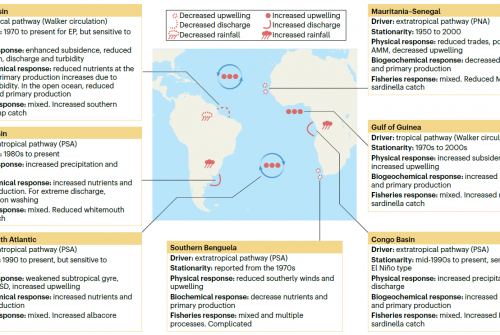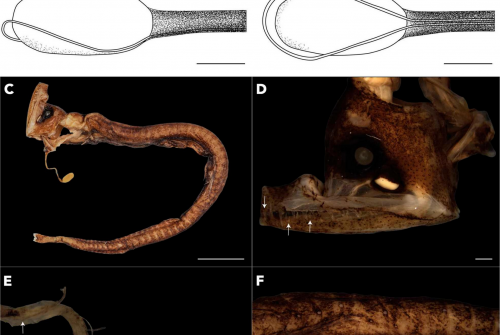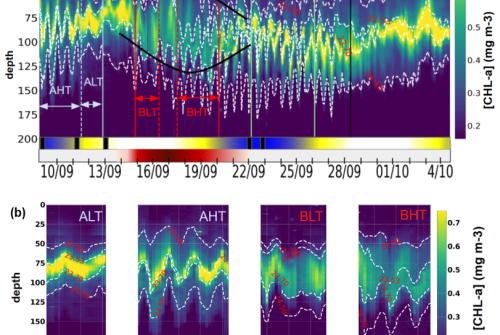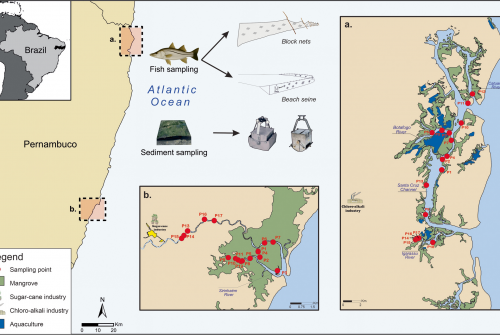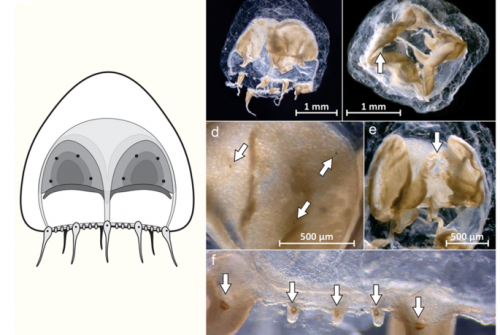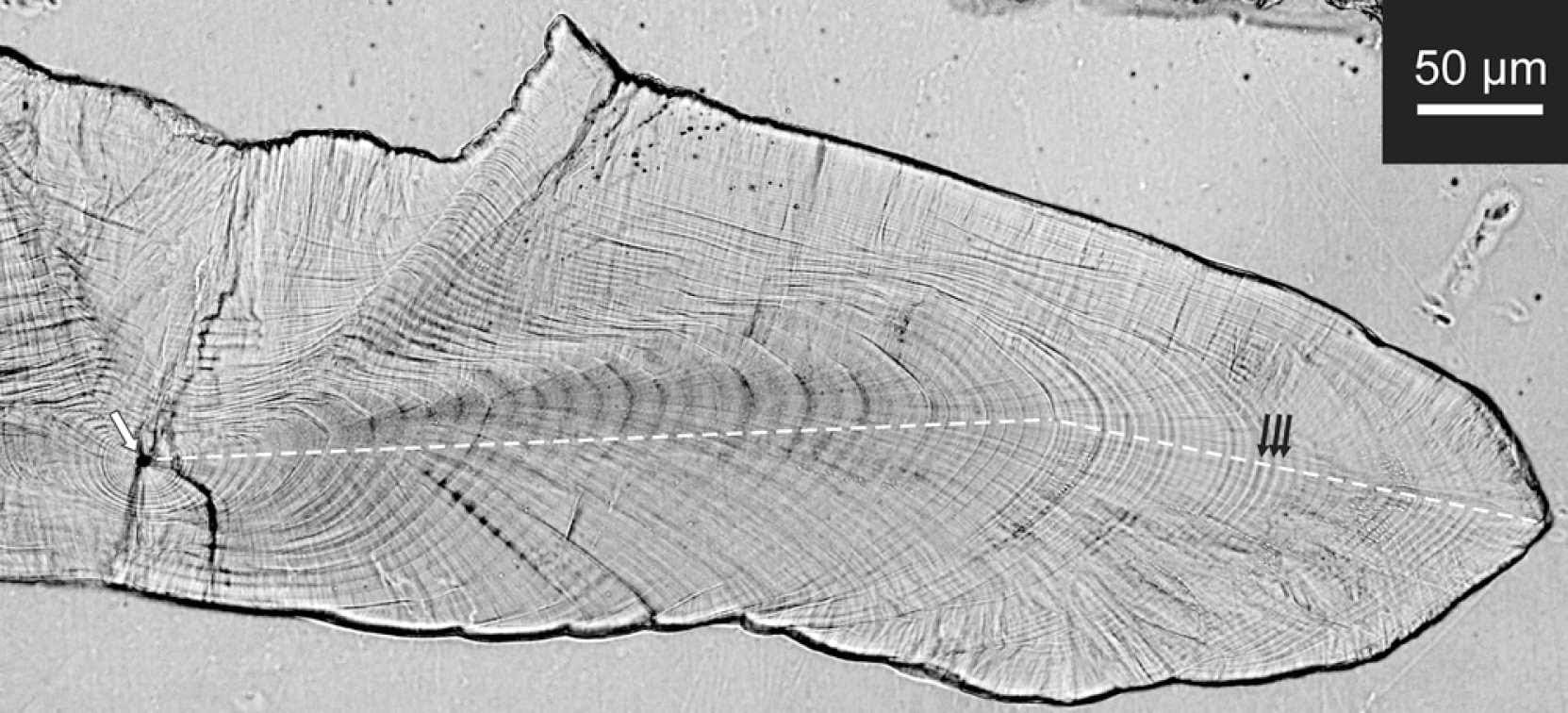
n this study, we investigated the size-at-age structure and growth of the horse-eye jack (Caranx latus), a highly mobile neritic species with significant commercial value in many parts of the tropical southwest Atlantic. For this, we combined size (standard length – SL) data and otolith readings from 282 juvenile and adult specimens of the species captured across a range of inshore (estuaries) and offshore habitats spread along the Brazilian coast between 2017 and 2019. Both otolith edge-type interpretation and marginal-increment width analysis suggested that annuli are deposited only once a year for C. latus in this part of the world, the opaque band being formed between May and August. The growth parameters estimated by the growth model that fitted best our size-at-age data (von Bertalanffy) were 782.37 mm for Linf, 0.179 for k and − 0.436 years for t0. Interestingly, fish ages differed between local inshore and offshore habitats: 91.8% of the individuals captured in the estuaries (36–223 mm SL) were age-0 fish, while all age groups (0–13 years) were found in the offshore marine area, where sizes ranged from 155 to 760 mm SL. Growth is apparently the fastest in the first year of life, allowing to reach up to 22.75% of the local maximum size expected for the species at one year. These results can inform fishery and ecosystem management strategies in Brazil but also elsewhere, as the present study provides the first assessment of C. latus growth in the South-Western Atlantic based on detailed size-at-age data for most life stages and lifetime habitats.
DOI: doi.org/10.1016/j.fishres.2022.106368
Reference
Gonzalez, J. G., Frédou, T., Duarte-Neto, P. J., Petit, C., Labonne, M., Lessa, R. P., & Darnaude, A. M. 2022. Age validation and growth in an exploited but poorly studied tropical fish species, the horse-eye jack (Caranx latus). Fisheries Research, 253, 106368.



